Breakfast at Tiffany’s

I bought this Truman Capote 700+ page book so that I can read and review some of its contents, including ‘Breakfast at Tiffany’s’.
Some of my other reviews of Truman Capote works can be found in the list HERE.
I have found it appropriate to recommend his work to readers who enjoy many of the horror and weird books I review on this site.
When I commence my review, it will be found in the thought stream below or by clicking on this post’s title above…

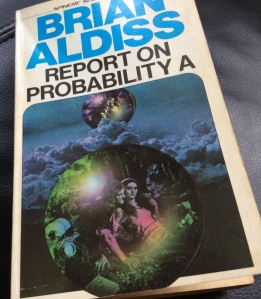

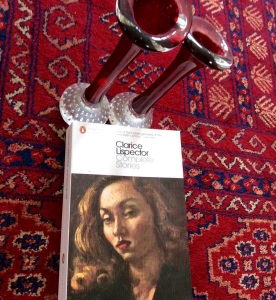
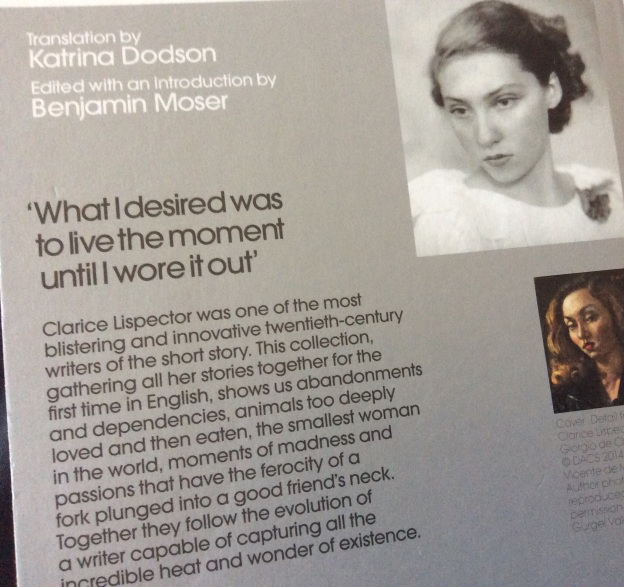
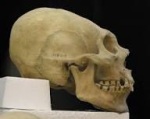
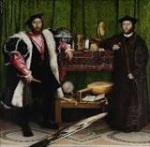
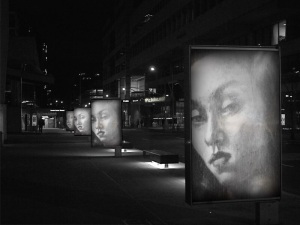

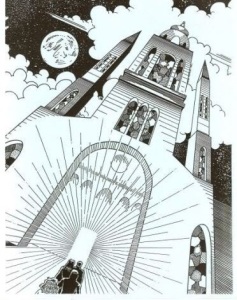
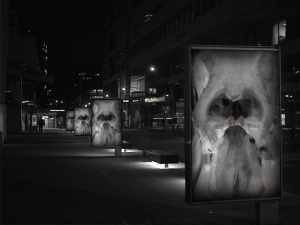
“These two hands had been at these positions, maintaining between them an angle of fifty degrees, for a period of something over eleven months. Although, when his attention encompassed the clock, G entertained the theory that the clock still worked, he was reluctant to test the theory by attempting to wind the clock mechanism.”
For a few years now, I have been wanting to test my real-time reviews by others joining in with their own real-time reviews about the same book so as to triangulate the coordinates or leitmotifs of its gestalt. This book seems to be about triangulation, and here in its first chapter some authorial triangulator (whom I take to be Aldiss himself) is giving us a meticulously detailed and deadpan survey of G in his wooden bungalow, a bungalow built by Mr. Mary near his own house where he lives with Mrs. Mary whom G himself surveys or triangulates, by various angles and geometries and mirrors, as he shakes his mat after reading a newspaper about a self-burying water-hose. There are two other triangulators with long complicated names who appear to be outside all of this but also surveying what is happening to G in his bungalow. They talk of lettered Probabilties and Certainties, a gradation or pecking order of parallel or alternate worlds? But do they triangulate Aldiss? Or, rather unlikely, the book’s current reviewer?
Impossible to cover all the angles or details in a review, itself another triangulation, a triangulation above all others, I suggest.
“With the thickening of the light, it became impossible to see whether the rain came down on one or both sides of the panes.”
Emptying buckets, relentless rain, G’s tactile watching, making unsweetened contents of mugs, his status being queried by the two overseers with long names* as to his humanity or rationale (or their own perceived rationale in comparison!), and whether, I guess, G is in a dark Pinter play or a Beckett novel, with G watching across the garden, through the rain, curtains pulled in Mr. Mary’s house, the streaking rain smearing across the page, I imagine, from Danielewski’s recent retrocausal novel ‘The Familiar’.
There is the black and white reproduction of a painting on G’s wall, the coloured version of which painting being upon the front cover of the book pictured above.
My own angle of witness is my memory of reading this book about forty years ago and not recalling much about it other than the nature, if not the details, of its anti-novel minutiae. It has haunted me ever since, without those details! Till now…
* Midlakemela and Domoladossa, whom I shall in future call M and D for short.
“; he saw perching on the roof of the ancient brick coach house, a homing pigeon whose name he had reason to suppose was X;”
I have just noticed that this whole first section of the book starts with the heading: “PART ONE / G Who Waits”
The descriptions of description are haunting and relentless and meticulous and off the wall and ground-breaking, a book that should be more well known by far, I suggest.
Deadpan, and shiveringly implicatory about the house and its inhabitants. This G and his environment seems to be Probability A being studied for human responses by M and D — and I am studying *them*, for the first time in this book’s history.
G. F. WATTS (1817 – 1904)
George Frederic Watts was a popular English Victorian painter and sculptor associated with the Symbolist movement. He said “I paint ideas, not things.”
WIKIPEDIA:
It represents a shepherd neglecting his flock in favour of an attractive country girl to whom he shows a death’s-head hawkmoth. The meaning of the image has been much debated.
Hunt painted the picture when he was working in close collaboration with John Everett Millais, who was painting Ophelia at the same time in the same region of Surrey. Both paintings depict English rural scenes, the innocence of which is disturbed by subtle but profoundly threatening violations of natural harmony. In Hunt’s painting, the shepherd ignores his flock of sheep, who wander over a ditch into a wheat field. This violation of boundaries is paralleled by the shepherd’s physical intrusions into the personal space of the young woman, who responds in an ambiguous way that might be interpreted as complicity or as a knowing scepticism. As he shows her the moth, he places his arm round her shoulder.
The painting by GF Watts I happened to choose above as illustration of his work is entitled HOPE.
Other Facebook Friends can see all this recorded HERE.
“…commenced to walk along the concrete path, taking care not to tread on the cracks between the concrete blocks”
I already appreciated the great quality of this book from reading it 40 years ago, but I had forgotten – or wasn’t, all those years ago, sufficiently sensitive to – quite HOW great. Indeed, it is a seminal work of hyper-imaginative fiction, and exceeds most of the more noted works in Brian Aldiss’s – or anyone else’s – canon of such fiction, I suggest.
And that includes in all literature, not just SF.
G is now back in his bungalow.
While a new character, designated S, in the cafe, has dialogue in Pinteresque or Aickmanesque non-sequiturs and sequiturs about, inter alia, Tahiti, car strikes, fish prices….
We now see Mr Mary’s house and environs from the triangulation of these new eyes in the cafe.
Seeing, inter alia, the garage, the shabbiness, cat, pigeon, Mr Mary in some business at his sink, the old brick outhouse where S eventually enters.
Language is spot on.
There are myriad details that you gather in as you read and follow the complex audit trails of intent and non-intent, with painterly precision or random daubing.
D & M:
considerations of –
Uni-probability.
Myriad different probability worlds?
D’s wife possibly not met in some continua?
And much more.
Up to \ “within this opening.”
Within the outhouse, we learn of S’s connection with Mr Mary as well as a memorably mesmeric description of the ‘telescope’ he has cached away in a niche, an implement that strikes me as more like binoculars or trinoculars (not unlike the header of this site above!) through which he triangulates a focus upon the house and its occupants as a sort of spy – in the same manner as I have become a spy on this whole book?
“….it was possible to obtain a sort of symposium view of her whole head and all the features on it.”
Aldiss’s Symposium View – an alternative term for my Dreamcatcher gestalt’s trickledown from leitmotifs??
S continues to view Mrs Mary at the sink, through his ‘telescope’…
These passages are Highest Literature as well as the most special SF/Horror Genre or Anti-Novel effect of serial ultra-detail, almost making the map of her person a blend of, say, a Cthulhu monster and a portrait by Rembrandt, in my book.
\end of Chapter Five
“He considered the passage he had just read extremely erotic, and wondered how the Governor would take it.”
I am the Governor?
“Most of the cuts were less than five centimetres long. Where two or more intersected, the bark of the log had in some cases sprung away, revealing a triangle of the lighter wood beneath.”
There is something tactile about the description of S’s “predatory” spying upon Mr Mary’s hose, something retributory? As well as that tactility, there are potential multi-palimpsests of windows and lenses, and accretive lists of objects, making a whole world telescoped into the words that make it. As well as the author as a freehold Aldiss lamp, we have the reviewer or Governor (me), and Distinguishers – constituting a Symposium with ‘various combinations of sin and innocence’ and a ‘co-determinate synchronicity’ as ‘probability-sphere’. The ultimate Dreamcatcher, I guess?
And now the next set of chapters, that begin at ‘one’ again, are headed:
PART TWO – S The Watchful
The previous chapters dreamcaught above were headed at outset:
PART ONE – G Who Waits
although half of that Part turned out to be about S !
“The circle began to tremble.”
With intensely conveyed scrutiny through his telescope, S’s vision circles an empty milk bottle and the apparent act of someone taking it indoors off the outside doorstep, a church tower glimpsed, whilst he looks at another black and white reproduction of WH HUNT’s painting, this one nailed against the outhouse crossbeam. The circle indeed trembles, a circle of uncannily subtle repetitions, all very worrying to someone like me who examines this text as closely as S examines the things described BY the same text.
A text with words that are hired and shepherded into place by various impulses?
“…although the girl in part leant away from, or was averse to, the advances of the shepherd, there was nevertheless a part of her that inclined towards him, or was predisposed to accept his advances.”
As an aside, the above ambiguity concerning the girl in the WHH painting coincidentally reminds me of the personality of Holly Golightly in Truman Capote’s novella ‘Breakfast at Tiffany’s’ that I happen to be concurrently real-time reviewing HERE.
It seems to me that the black and white reproduction of the painting is in two places because those two places are not themselves coincident in time with each other and NOR are the paintings. In fact, they seem to be painted by different WHHs, too.
I suspect there also exist slightly different versions of this book itself! I now seem to be a Cogitator as well as a Governor? Watchers watching watchers watching me – ad infinitum, ad absurdum…?
Also I am reminded of TV reality shows like Big Brother that have grown up since this book was published in 1968… But where is the Diary Room, the Task Room, the Secret Room?
Meanwhile, Aldiss’s precisely obsessive description of the slightly ‘alternate’ WHH painting of the Hireling Shepherd is superb, spot on, the height of writing….
“The pages were yellow with age.”
S’s magazine, that is. But, as you can see from the photo of it above, this Aldiss book I am reviewing also has pages that are yellow with age. That may turn out to be significant later?
We now see S seeing G interact with a plump female figure and we learn slightly more about the backstory of various characters, including Mr Mary the writer for whom S once worked, I infer, as amanuensis, with him now out of favour. The plump figure tries to smuggle him into the house under Mr M’s nose to have a bath?
Also, as an aside, some of the triangulated views make me imagine looking through the round window or the square window or the arched window of the Playschool programme that used to be on British TV in 1968.
And I infer that the plump figure has just collected paraffin – for an Aldiss lamp? Well. explicitly for a lamp of some sort…
Interesting observation, too, that plumpness and leanness of body probably conceal a similarly sized skeleton.
GF Watt, fish strike, pork pie…
“Removing first the left shoe and then the right, he dropped them down onto the floor, where the indentations on the planking formed an arrangement of shades, some almost straw-coloured, some more of a dark sienna shade where dirt had rubbed into the wood; the effect to an unfocused eye was reminiscent of a woman’s hair.”
This substantive chapter reaches an apotheosis of the type of experience upon which I have been reporting earlier in this review. I suggest it provides a ‘reality’ beyond anything else in literature, and part of that effect is learning, as reader, to operate yourself that ‘unfocused eye’ as to what the deviously methodical text inner-radiates rather than what it says for itself out in the open.
Meanwhile, using a dog-eared teddy-bear as a pillow, operating within a telescope’s circle of vision, feeling the tactile quality of the things-as-descriptions, following or shepherding events and objects like a panning shot of narration, as if YOU are the person moving about and watching in this shuttling plurality of worlds, via those Playschool windows now more clearly factored-in as lenses in your own kaleido-scope of vision, all set against the yellow-foxed wallpaper of each paper page. Choose your own path to adventure, turn one corner or another corner, it is up to you, with the impression given that the words change between one reading of the book and the next.
“So their painters became masters of the Unresolved, of the What Next? instant: the dilemma, the unanswered question, the suspended gesture, the pause before destruction –”
Victorian painters, like WHH. An otherwise obscure painting, The Hireling Shepherd, as prime example of that ‘instant’?
Accept that, and this book becomes tractable.
Ready-mades as found art, words as vehicles for a meticulous, deliberate, almost slow-witted, bodily movement and its manipulation of props.
“I’ll forget my own head one of these days.”
…which seems appropriate for the whole book’s consciousness of itself!
Meanwhile, this chapter includes a paragraph that seems almost cheating to read, supposedly summarising, as it does, the exact circumstances of what has been happening heretofore – to and by whom.
But I, as Governor and Real-Time Dreamcatcher, keep my powder dry.
(The book’s old pages themselves seem to threaten crumbling into yellow powder themselves.)
THE HOUSE AND THE WATCHERS
Chapter One
“The surface of the road was of a dark crumbling texture.”
A new watcher named C and a new device – one that I should have predicted arriving in this book sooner or later: A PERISCOPE.
I wonder if we are due to meet a Camera Obscura in this book’s last few chapters?
We also meet GF WATT again, the stationer… And how he fits into the slowly accreting situation of characters, places and times.
Domoladossa himself interrupts his reading, presumably preparing to enter the world about which he has been reading.
I suspect each reader of this book (you and me) will eventually end up entering one of its slowly accreting realities FOR REAL?
“…thousands of drops of rain.”
We follow C who appears to be Mrs. Mary’s erstwhile chauffeur role-playing or reality-playing this past role, with a real flat-tyred car in the garage that also houses a canoe. The relentless rain also reminds me of the rain in THE FAMILIAR, that even smears its own text on the page like raindrops down a sopping wet window, as in that book. The whole digging for truth element of the Aldiss book, meanwhile, through levels of multi-witnessed reality in the Pinteresque or Beckettian shape of urban detritus and downbeat buildings (meticulously accreting into a single structure?) echoes THE HOUSE OF LEAVES and Bulwer-Lytton’s THE HOUSE AND THE BRAIN. It is no accident that this Part Three is entitled THE HOUSE AND THE WATCHERS.
But – “The Witnesses Are Gone” – Joel Lane. Query.
“…and, beyond the privet hedge, another property belonging to a bachelor whose grandfather had built a lighthouse somewhere along the coast of South Africa or South America.”
The above quote is entirely irrelevant. In or out of context.
The arbitrary choice at that quote’s end, though, is symptomatic of the distant (as well as close) reality-choices in this book generally.
There are now dramatic happenings evolving, characters and their ostensible motivations clicking into place, as C observes them with his PERISCOPE, the angles of its lenses sometimes creating flaws and elongations so typical, for me, of Francis Bacon paintings.
Also a cat tries to drag a pigeon further into the book. That pigeon – sometimes called X – is me.
This chapter is the book’s coda. A canoe as C’s coffin (or ark for the rainfloods?)
It is some panning out of events that, if you take them in spirit, are highly moving, including the WHH’s HIRELING SHEPHERD painting coming to life itself in a ‘dying fall’ lamentation, itself a chaconne for GFW’s painting of HOPE represented by WHH’s young couple both waiting…
Waiting is the apotheosis of Hope.
The whole book is a slow waiting-room in itself, a fathoming out of how being witnessed affects what is being witnessed, how even a secret observation creates changes in those being observed. Not a whodunnit, but a repetitively incantatory whosawwhomwhen.
It is too simple to call this book Einsteinian. It is, instead, an Aldissian lamp upon our very nature of existence, a lantern’s crack of triangulated light upon a tell-tale heart.
A Ouroboros of not a single snake but of two snakes (reader and author), but which snake swallows which?
“Looking down, he identified a number of pigeon feathers.”
end